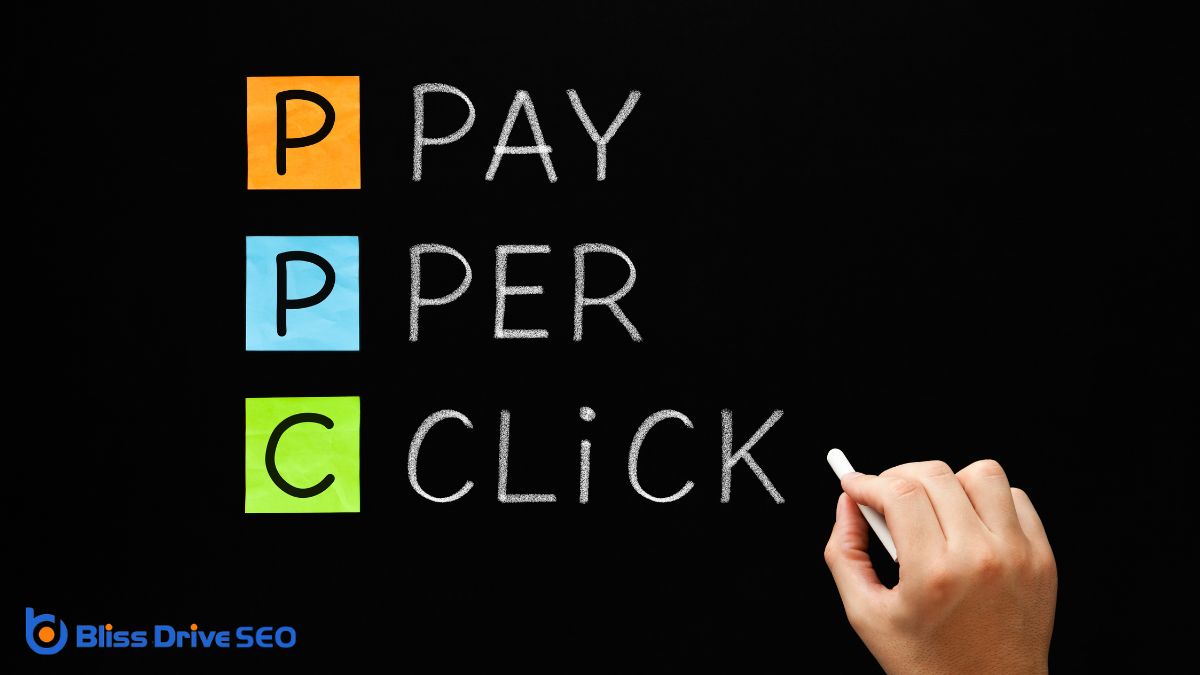Digital Marketing Services
Learn More About Us

To maximize earnings from pay-per-click (PPC)An online advertising model where advertisers pay a fee each time their ad is clicked., focus on strategic ad placement, audience targeting, and effective keyword researchThe process of finding and analyzing search terms that people enter into search engines.. Craft engaging ad copyThe text or content of an advertisement. and select platforms that reach your audience best. Keep watch on campaignA set of ad groups sharing a budget, targeting options, and other settings. metrics like click-through and conversionThe completion of a desired action by a referred user, such as making a purchase or filling out a fo... rates. Estimate earnings by multiplying conversion rates with average sale value while balancing costs per click. Your profits stem from regular optimization and adapting to trends. Discover how these strategies elevate your PPC game and boost returns.

When diving into the world of PPC advertising, it's important to grasp its foundational concepts. Imagine this: every time someone clicks on your ad, you pay a fee. Fundamentally, you're buying visits to your site rather than earning them organically.
Understanding keywordsWords or phrases that users type into search engines to find information. is significant; these are the terms potential customers search for online. You'll bid on these keywords, and your ad's placement relies on factors like bid amount and ad quality.
Crafting a compelling ad copy is essential, as it directly influences click-through rates. Keep your target audience in mind to guarantee your message resonates.
When you strategically place ads in high-visibility zones, you can considerably boost your PPC earnings.
These prime spots not only attract more clicks but also enhance the relevance of your ads through contextual targetingPlacing ads on web pages that are relevant to the content being displayed..
Effective ad placement can considerably boost your earnings in a pay-per-click campaign. By strategically placing your ads, you increase the likelihood of attracting more clicks and conversions.
You need to understand your audience and where they spend the most time online. Consider user behavior and tailor your ad placement to align with these insights. This strategy guarantees your ads are seen by the right people at the right time, maximizing engagementThe interactions that users have with a brand’s content on social media..
Utilizing analytics toolsSoftware used to track and analyze website performance, user behavior, and marketing efforts., you can assess the performance of various placementsSpecific websites or locations within websites where ads can appear., allowing you to refine your approach. Don't just guess—use data to make informed decisions.
By focusing on high-visibility zones, you can greatly boost your pay-per-click earnings. Placing ads in areas that naturally draw the eye considerably increases click-through rates. Think about it—ads in prime spots like above-the-fold or within engaging content drive more interaction. The difference in revenue can be striking, transforming a modest income into something truly rewarding.
Here's how ad placement impacts earnings:
| Placement Zone | Click-Through Rate | Emotional Reaction |
|---|---|---|
| Above-the-Fold | High | Excited to see results |
| Sidebar | Moderate | Curious but cautious |
| Footer | Low | Disappointed by outcome |
| Embedded in Content | Very High | Enthusiastic engagement |
| Pop-Up | Variable | Mixed feelings |
Understanding these zones lets you strategically place ads for the best revenue, tapping into the potential you may have overlooked.
Maximizing your pay-per-click earnings isn't just about ad placement; it's also about how well those ads align with the content. When ads match the theme of your site, your audience is more likely to find them relevant and click on them.
Contextual targeting guarantees that the ads shown to your visitors relate to the content they're already interested in. This increases engagement and boosts your revenue.
To achieve this, analyze your site's content and understand your audience's needs. Use tools that automatically select ads based on your page's keywords and topics.
When maneuvering the pay-per-click (PPC) landscape, understanding industry competition is critical for maximizing your earnings. You can't overlook how competitive your industry is, as it directly influences bid costs and ad placements. In highly competitive sectors, costs-per-click (CPC) tend to be higher, which means you'll need a bigger budget to maintain visibility.
Conversely, less competitive industries might allow you to achieve results with lower bids.
Analyze your competitors' strategies by observing their ad copy, keywords, and landing pages. This helps you differentiate your campaign and identify gaps you can exploit. If your rivals have strong campaigns, focus on unique value propositions to stand out.
Staying informed about industry trends and adapting quickly guarantees you remain competitive and optimize your PPC earnings.
Having understood the role of industry competition, it's time to focus on identifying your target audience for better returns. Knowing who you're trying to reach is vital for maximizing the effectiveness of your pay-per-click (PPC) campaigns.
Start by analyzing your current customer base. Who are they? What do they need? Use this data to build detailed buyer personas.
Next, research your competitors' audiences. Look for gaps or unique segments you can target effectively. Tailor your ads and landing pages to speak directly to these identified groups.
Test different messages and images to see what resonates best. By refining your audience targeting, you can improve click-through rates, reduce costs, and ultimately increase your earnings from PPC efforts.
Understanding your audience is key to success.
To thrive in pay-per-click advertising, you need to choose platforms that align with your audience's insights and goals.
Consider how each platform's users match your target market and tailor your budget allocationThe process of distributing a budget across different campaigns and ad groups. to maximize returns.
Don't forget to optimize ad formats to suit each platform's strengths, ensuring your campaigns are both effective and efficient.
Why is choosing the right PPC platform essential for your campaign's success? Understanding the audience each platform attracts is key. Different PPC platforms have unique user demographics, and aligning your campaign with the right audience improves your chances of success. For instance, if your target demographic is young professionals, LinkedInA professional networking site used for career and business networking. might be your best bet.
Here's a quick comparison:
| Platform | Audience | Key Feature |
|---|---|---|
| Google Ads | Wide, diverse | High search intentThe purpose behind a user’s search query. |
| FacebookA social networking site where users can post comments, share photographs, and links to news or othe... Ads | Social, varied | Detailed targeting options |
| LinkedIn Ads | Professionals | B2B focus |
When planning your budget allocation for PPC campaigns, understanding the strengths of each platform can markedly impact your success.
To allocate effectively, consider where your audience spends most of their time. Google Ads offers vast reach and detailed targeting, ideal for broad audiences.
Facebook Ads excel with precise demographic targetingDelivering ads to users based on their demographic information, such as age or gender., which is great for nicheA specific segment of the market targeted by affiliates to promote products or services. markets. LinkedIn is perfect for B2B campaigns and connecting with professionals.
Don't put all your eggs in one basket; diversify to test which platforms yield the best results.
Monitor performance metricsKey indicators used to measure the effectiveness of affiliate marketing efforts, such as clicks, con... like click-through rate (CTR)The percentage of users who click on a specific link or CTA. and conversion rate to adjust your spending. Stay agile.
Over time, you'll identify which platforms offerThe specific product or service being promoted by affiliates. the highest return on investment (ROI)A measure of the profitability of an investment, calculated by dividing the net profit by the cost o... for your business, allowing you to fine-tune your strategy.
Selecting the right ad format can greatly influence the success of your PPC campaigns. With multiple platforms available, understanding each one's strengths and audience reach is essential.
Start by identifying your target audience and their preferred platforms. Google Ads, for instance, excels in search intent, while Facebook Ads tap into detailed demographic targeting.
Consider ad types like text, display, or video, and match them with your campaign goals. Text ads might work well for immediate sales, while video adsAdvertisements that play video content, often on platforms like YouTube or social media. can build brand awarenessThe extent to which consumers are familiar with the qualities or image of a particular brand..
Test different formats to see which yields better engagement and ROI. Don't forget mobile optimizationDesigning and formatting web content to ensure it performs well on mobile devices., as many users browse on phones.
Crafting effective ad copy is essential for maximizing engagement in pay-per-click campaigns. You need to grab attention quickly, so start with a compelling headline that speaks directly to your audience's needs.
Use action-oriented language and focus on benefits rather than features. Highlight what sets your offer apart from competitors. Keep your message clear and concise—every word should count.
Don't forget a strong call to action (CTA). Encourage users to take the next step, whether it's clicking a link, signing up, or making a purchase.
Test different versions of your ad copy to see what resonates best with your audience. Analyze performance metrics and make adjustments as needed. By refining your approach, you'll drive more clicks and boost engagement.
To maximize your pay-per-click earnings, you must leverage keyword research effectively. Start by identifying keywords that align with your target audience's interests. Use tools like Google Keyword Planner to discover high-volume, low-competition keywords. These keywords increase the chances of your ads reaching the right people.
Next, focus on long-tail keywordsLonger, more specific keyword phrases that are less competitive and often more targeted.. They might have lower search volumes but often lead to higher conversion rates because they're more specific. Consider the user's intent behind these searches and tailor your ad content accordingly.
Regularly update your keyword list based on performance and trends. Staying adaptable helps you capture new opportunities and refine your approach.
Once you've established your PPC campaigns, it's crucial to monitor and optimize their performance to guarantee maximum ROI.
Start by regularly checking your campaign metrics. Make sure you're tracking clicks, conversions, and cost per acquisition. This data will help you identify trends and areas for improvement.
Here's a quick guide to get you started:

Understanding how much you can earn from pay-per-click (PPC) campaigns involves a few key calculations that can help you estimate potential revenue.
Begin by determining your cost per click (CPC), which is the amount you pay each time someone clicks on your ad.
Next, calculate your conversion rate—the percentage of clicks that result in a sale or desired action.
Multiply your conversion rate by your average sale value to find your earnings per conversion.
Then, use this figure with your CPC to calculate your profit margin.
Finally, estimate your total earnings by considering your daily or monthly ad spend and projecting the number of clicks you expect to receive.
These calculations give you a clearer picture of potential earnings.
To maximize your earnings from pay-per-click (PPC) advertising, focus on understanding the basics, like ad placement and industry competition. Identify your target audience and choose the right PPC platforms to guarantee success. Craft engaging ad copy and leverage keyword research to boost your returns. Keep a close eye on your campaign's performance, optimizing as needed. By calculating potential earnings, you'll gain insights into what works best, helping you achieve better financial results.
